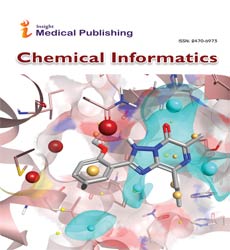Abstract
Lithium parameters in patients with bipolar disorder treated with lithium carbonate; age and dose dependent
Beckground: Lithium in the form of lithium carbonate (Li2CO3) has become one of the most effective and widely prescribed drugs for mood stabilization. Its optimal and safe therapeutic blood levels and age dependence in patients with bipolar disorder are perpetually discussed.
Methods: The mean Li2CO3 and lithium ions daily dosage, serum and urinary lithium concentration and urine lithium to creatinine ratio were quantified and calculated in groups of patients aged ≤50 years (mean 34 years; n=22) and >50 years (mean 62 years; n=58) who were under lithium treatment.
Results: The mean Li2CO3 and lithium ions daily dosage, serum and urinary lithium concentration, and urine lithium to creatinine ratio were in the groups of patients aged ≤50 and >50 years 894 and 611 mg/day (p<0.0001), 24.2 and 16.6 mmol/day (p<0.0001), 0.53 and 0.55 mmol/L (p=0.786), 8.96 and 8.12 mmol/L (p=0.496), 1.16 and 0.96 (p=0.098), respectively.
Conclusion: The average daily dose of Li2CO3 in the group of patients > 50 years old was lower by 32% than that of the second patients group aged ≤ 50 years. However, the serum lithium concentration was practically identical in both age groups. Lithium excretion presented as urinary lithium to creatinine ratio was also quite similar. These findings cannot be explained by decreased lithium clearance, since its excretion was not significantly different in both age categories. Other factors such as intestinal absorption and age dependent pharmacological characteristics should be taken into account.
Supported by MH CZ-DRO(FNBr,65269705)
Author(s):
M.Dastych and O.Synek
Abstract | PDF
Share this

Google scholar citation report
Citations : 173
Chemical Informatics received 173 citations as per google scholar report
Abstracted/Indexed in
- Google Scholar
- China National Knowledge Infrastructure (CNKI)
- Directory of Research Journal Indexing (DRJI)
- WorldCat
- Geneva Foundation for Medical Education and Research
- Secret Search Engine Labs
- CAS (Chemical Abstracting Services)
Open Access Journals
- Aquaculture & Veterinary Science
- Chemistry & Chemical Sciences
- Clinical Sciences
- Engineering
- General Science
- Genetics & Molecular Biology
- Health Care & Nursing
- Immunology & Microbiology
- Materials Science
- Mathematics & Physics
- Medical Sciences
- Neurology & Psychiatry
- Oncology & Cancer Science
- Pharmaceutical Sciences

